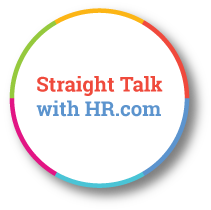Beyond Completion Rates: Measuring What Matters in Corporate Training
Exclusive interview with Dr. Jill Stefaniak, Chief Learning Officer, Litmos
Posted on 05-06-2025, Read Time: 6 Min
Share:


 |
As AI and predictive analytics reshape corporate learning in 2025, organizations are racing to close skills gaps before they disrupt productivity. At the forefront of this transformation is Dr. Jill Stefaniak, Chief Learning Officer at Litmos. |
In an exclusive interview, Dr. Stefaniak shares how Litmos is using data to drive proactive learning strategies, personalize employee development, and balance data-driven insights with human-centered design—all while upholding ethical standards for data privacy.
Excerpts from the interview:
Q: With AI and predictive analytics advancing in 2025, how is your team leveraging learning data to anticipate skills gaps before they impact business performance?
Dr. Stefaniak: We’re leveraging performance data from our LMS dashboards to monitor learning engagement to align with key performance indicators. This allows us to detect emerging skills gaps early. AI also provides us with an opportunity to personalize learning paths to proactively recommend upskilling opportunities before performance is impacted.Q: What KPIs or learning metrics are proving most valuable this year for demonstrating ROI on training programs to executive leadership?
Dr. Stefaniak: Some of the most tried and true learning metrics are still relevant today to demonstrate ROI of training programs and have an opportunity to be further enhanced with AI. Metrics like training completion rates and learner engagement offer early signals of program relevance and learner motivation.AI technologies can help to identify dropout patterns, recommend adjustments to content, and send reminders to learners. Knowledge acquisition and retention can be further strengthened with AI technologies by examining learners’ personalized learning paths over an extended period of time to gain a deeper understanding of their knowledge retention post-training. This also serves to identify opportunities for reskilling or reinforcing important topics.
Metrics such as time to proficiency and internal mobility directly connect learning outcomes to workforce performance. Personalizing learning paths can help accelerate learners’ skill development by creating intentional, curated resources to support and prepare learners for future mobility opportunities within the organization.
The impact of personalized learning from AI-curated paths can be used to make a strong case for adaptive learning experiences. Collectively, these metrics can demonstrate L&D effectiveness while providing a data-driven narrative to organizational leadership.
Q: How are you balancing data-driven decisions with human-centric approaches in your learning strategies, especially as personalization becomes the norm?
Dr. Stefaniak: At its core, learning strategies are designed for learners. Establishing a blended approach that marries data with human-centricity is essential when developing effective training programs and L&D content. We can - and should - leverage data behind-the-scenes to inform and validate the direction of a learning strategy. However, the human element including individual needs, preferences, and varied skill levels cannot be forgotten. Building a successful learning strategy is a meticulous balancing act, requiring an equal commitment to employee needs and overarching business objectives.
Q: Are you seeing a shift in the types of learning content or platforms that generate the most engagement or impact based on your analytics?
Dr. Stefaniak: Today, there is growing emphasis on personalized and adaptive learning content as corporations strive to better recognize learners as people, prioritizing a holistic and individualized approach to training that boosts engagement and reduces burnout.With this shift, we are seeing that learners with access to personalized content and inclusive learning environments are experiencing a greater impact thanks to their training content and showcasing improved knowledge retention. As learners' familiarity and preference for personalized L&D continue to grow, strategic and intentional usage of AI will support efficient, effective and accessible learning.
Q: How do you ensure data privacy and ethical use of employee learning data while still driving insights and performance improvements?
Dr. Stefaniak: We prioritize data privacy by adhering to strict governance policies, anonymizing learner data, and ensuring compliance with regulations, such as GDPR, SOC II, and CCPA. The AI Assistant is powered by Litmos’ proprietary AI infrastructure, ensuring content and data are secure and protected.Error: No such template "/CustomCode/topleader/category"!

